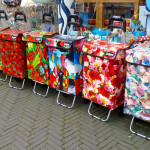Search Results
-
Shrinky Dink
Several weeks ago, Vancouver held its first open house for a “laneway” house (Laneway houses are comparable to Seattle’s back yard cottages) built as part of its EcoDensity initiative. I haven’t seen the Vancouver project, but I did take a trip to see some very small cottages in Portland built by Orange Splot Cohousing Development called Ruth’s Cottages. These two projects reflect a growing trend in trying to legalize neighborhood...Read more » -
Vancouver’s Transit Advantage: It’s the Neighborhoods
A few weeks back, Vancouver, BC-based urban planner Zach Shaner posted a comparison of bus transit service in Seattle and Vancouver. Shaner’s basic claim—that Vancouver’s bus service just works better than Seattle’s—is hard to dispute. A few years ago I reached the same conclusion, based on the fact that TransLink, BC’s transit agency, provided far more bus rides per capita than did greater Seattle’s. But while I totally agree with...Read more » -
Zip Cart?
When I was growing up in Seattle in the sixties, the neighborhood grocery where my mom shopped let her and other regular customers push purchases home in the store’s shopping carts. We lived two blocks away, and we returned the carts promptly to safeguard the privilege. It was sometimes my older siblings’ job to return the cart while the rest of us put away the provisions at home. Consequently, my...Read more » -
Updating the "Granny Cart"
Editor’s note 4/19/16: We’re re-posting an old favorite today in honor of Earth Week. In a compact neighborhood, what’s one of the most helpful vehicles? A grocery cart! And even six years ago, styles were looking up. Have a new favorite of your own to add? Let us know in the comments section. Transport guru Todd Litman says the biggest vehicular breakthrough of recent decades is the rolling suitcase. That’s not...Read more » -
Inner Space
In putting together some background materials for a recent meeting, I stumbled upon a 5-year-old report by the Housing Partnership called Filling in the Spaces: Ten Essentials for Successful Urban Infill Housing. Five years is like an eternity in this economy, especially when it comes to housing. But I found the report still really fresh on the principles for dealing with growth in Northwest. The basic idea is that infill...Read more » -
Sprawl: Regulations vs. Culture
Far be it from me to try to moderate a debate between two of my favorite big-time bloggers, but there’s something importantly right about what both Matt Yglesias and Kevin Drum have to say about sprawl—even though they disagree with each other! Matt points out that sprawl is enforced by all sorts of zoning codes and development restrictions that keep lots large, streets wide and winding, parking abundant, and homes well-separated...Read more » -
Juice Hawgs
Editor’s note: This post is the first in a five-part series. Read more from the Parable of the Electric Bike. Mmmm. An electric bike. Zipping through the city. Surging up hills without gasping for breath. Riding in business dress and arriving fresh and dry. Healthy, moderate exercise. No traffic jams. Free parking. Huge load-hauling potential. Near-free fueling. Zero emissions. Breeze in your face. Appealing! So why haven’t e-bikes caught on...Read more » -
Get Your Mind Out of the Gutter
For years, environmentalists have touted “low-impact development”—letting soil and vegetation soak up heavy rains, rather than channeling storm runoff into gutters and sewers—as the best solution for stormwater. But as it turns out, LID has picked up a whole host of new fans: smart economists, developers, builders, and government regulators are now singing LID’s praises as well. The fundamental principle of low-impact development is that it’s better—both for people’s pocketbooks...Read more » -
Park and Slide
Last week Seattle’s new Mayor, Michael McGinn reversed a city policy that prohibited commercial parking near rail transit stations and sparked a controversy. In some ways, it’s a hyper-local, even neighborhood-level, controversy but it also makes an interesting case study for parking policies in cities and towns all over Cascadia. Parking issues can be a third rail in local politics and leaders across the region often confront a similar problems...Read more » -
Beyond Car Crash Culture
French film-maker Jacques Tati was known for his unique portrayal of the humor and folly of modern technology. His most well known films feature the misadventures of Hulot, a character that is part Mr. Bean and part Inspector Clouseau. One target of Tati’s critical humor was the automobile. Here is a priceless clip from his 1971 film Trafic in which Hulot (played by Tati) is an automobile inventor on his...Read more »


